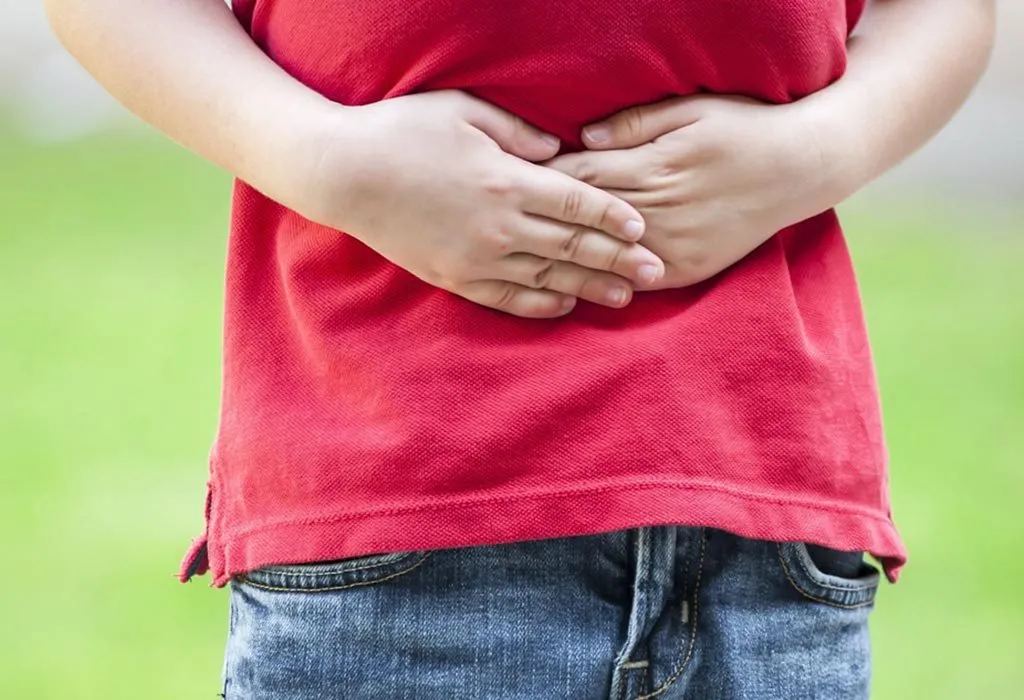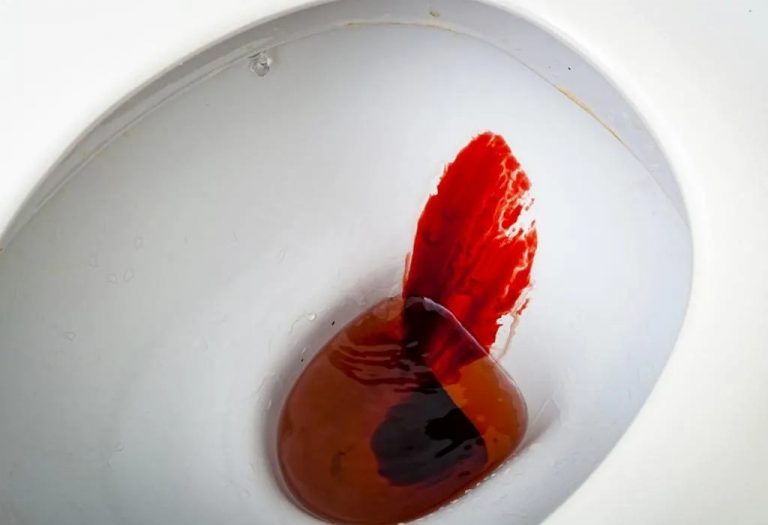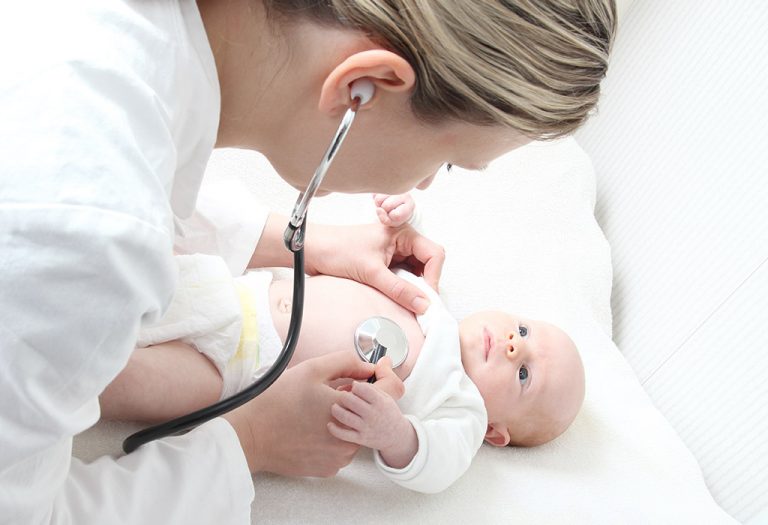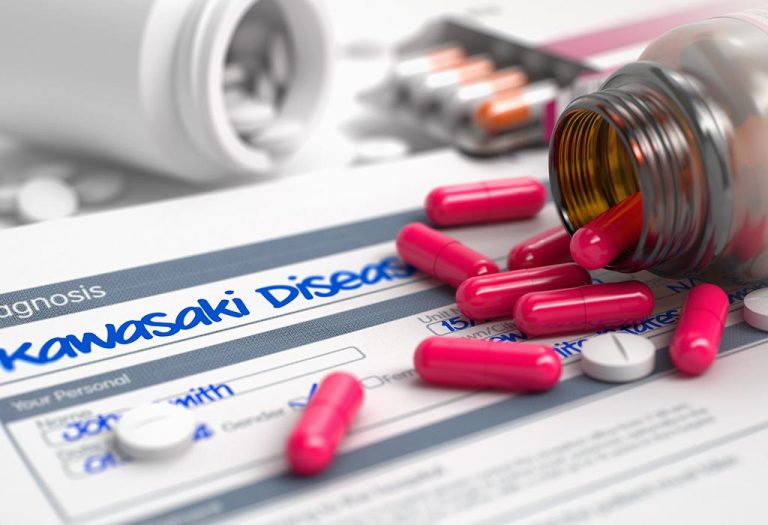Blood in Child’s Stool – Causes, Diagnosis and Treatment

- What Causes Blood in a Child’s Stool?
- Signs and Symptoms of Bloody Stool in Children
- Foods That May Give a Bloody Appearance to Child’s Stool
- Diagnosis of Blood in Child’s Stool
- How to Treat Bloody Stool in Children?
- Home Remedies to Treat Bloody Stools in Children
- When to Consult a Doctor?
- FAQs
Children hurt themselves and fall ill throughout their childhood. This is pretty much a usual cycle of growth and development that every parent expects. However, certain occurrences that are out of the ordinary could get your alarm bells ringing, and blood in your child’s stool is one such occurrence. Although this may immediately give you thoughts of an internal injury, the problem may not always be so severe. Hence, it is essential to know what’s causing the blood to be there in the first place. Understanding the potential causes can help you address any underlying issues appropriately and ensure your child’s health and well-being.
What Causes Blood in a Child’s Stool?

Here are some of the causes of a bloody stool in children.
1. Hirschsprung’s Disease
This is usually present in newborns and can be observed a few days into their birth. It is a severe condition where the baby’s intestine has fewer nerve cells or is completely absent of them. This results in failure to have any bowel movements, causing the abdomen to swell, and the baby to vomit. Stools in such cases come with blood present in them.
2. Blood Disorders
The presence of blood in the stool may not be because of a problem in the rectum but a problem in the blood itself. Any occurrence of disorders that are related to the clotting of blood or any abnormalities in the formation of blood vessels can result in this scenario and cause bleeding from the rectum. When such a condition is present, it also manifests all over the body in the form of rashes or simple bruises.
3. Mickel’s Diverticulum
This strange name is for a deformity that is a congenital disability. It happens after birth when the umbilical cord is cut. In this case, a piece of the umbilical cord could stay back and find itself in the lower regions of the baby’s small intestine. This umbilical cord contains stomach cells that begin secreting acid. This presence of acid in the intestine causes inflammation and ulcers, which also results in bleeding through the rectal path.
4. Juvenile Polyps
This condition is majorly observed in children between the ages of 2 to 10 years. According to a study published in the Clinics in Colon and Rectal Surgery journal, polyps are small structures that grow along the inner lining of the colon (1). At first glance, these may seem cancerous; they are not necessarily so. Generally, the passing of stool ruptures these polyps, which results in bleeding, which does not cause any pain.
5. Diarrhoea With Infection
An inferior form of food poisoning, diarrhoea is experienced by children and adults alike. On consuming any food item that is contaminated by harmful bacteria, parasites, or even viruses, these find their way into the digestive tract and infect it. The resulting diarrhoea that occurs from this could also lead up to the presence of blood in the poop.
6. Breastfeeding
Yes, breastfeeding can result in the presence of blood in the stools. However, the blood doesn’t belong to the baby; it belongs to the mother. This happens occasionally and can be caused if the mother has dry, cracked nipples. When babies feed, they may end up sucking on the cracks, causing blood to ooze out of it and be consumed by them. It might be just a few drops, but those are enough to show up in the baby’s poop.
7. Irritable Bowel Syndrome
Famously known as IBS, many children and some adults suffer from it. This is a condition where bowel movements are irregular, resulting in constipation as well as diarrhoea. The constant diarrhoea and the forceful movement of the bowel muscles to pass poop could rupture blood cells, resulting in bleeding in the rectal tract.
8. Crohn’s Disease
This is more of an infection that attacks the inner lining of the digestive tract. Also known as a form of colitis, this infection results in ulcers in the tract that cause intense inflammation. According to Mayo Clinic, these ulcers can rupture while passing stools, resulting in blood in the poop (2).
9. Milk or Soy Intolerance
Having a specific sensitivity towards milk-based products, especially those derived from cows, can result in bloody stools. When a formula mixed with cow or soy milk is introduced to the baby, a type of infection-like reaction occurs within the child. This results in the baby vomiting, having diarrhoea, and bloody poop. The mother’s consumption of cow milk could also pass on to the baby through breastfeeding.
10. Anal Cuts
Fissures or cuts in the internal lining or even around the anus can start bleeding while passing poop (3). A general consequence of constipation and forced pooping, every time the baby strains to poop, he puts pressure on the anus causing the cracks to bleed every time pooping occurs.
Signs and Symptoms of Bloody Stool in Children
Noticing blood in your child’s stool can be alarming, but understanding the signs and symptoms can help you identify the issue more effectively. According to UT Southwestern Medical Center, here are some key indicators to watch out for (4):
- Visible Blood: Bright red or dark maroon blood in the stool can appear as streaks or spots.
- Abdominal Pain: Complaints of stomach pain or cramping may indicate gastrointestinal issues.
- Changes in Stool Consistency: Diarrhea or unusually hard stools can be associated with bleeding.
- Additional Symptoms: Fever, vomiting, or unexplained weight loss, which can suggest a more serious underlying condition.
Foods That May Give a Bloody Appearance to Child’s Stool
Sometimes, certain foods can cause a red or bloody appearance in your child’s stool, which may not actually be due to blood. Here are some common foods that can lead to this confusion (5):
- Beets
- Tomato juice or sauce
- Iron supplements
- Red candies
- Cranberries
- Red food coloring
- Antibiotics (ampicillin)
- Paprika or Red pepper
Diagnosis of Blood in Child’s Stool
Healthcare professionals may employ the child’s medical history, age, and physical examination to pinpoint potential causes of rectal bleeding. An examination of the anus and perineum may be conducted to identify any signs of fissures or fistulas.
Additionally, the physician may recommend the following tests for blood in kids stool (6):
- Complete blood count
- Stool evaluation and culture (e.g., Wright stain) or fecal occult blood testing
- Colonoscopy, often the preferred diagnostic technique for rectal bleeding
- Abdominal ultrasound
- Ultrasonography
- CT scan or MRI
- Abdominal radiography or X-ray
How to Treat Bloody Stool in Children?
Treating bloody stool in children involves addressing the underlying cause and may include dietary adjustments, medication, and, in severe cases, medical procedures like below:
- In most kids, bloody poop usually occurs as a result of diarrhoea that takes place after eating food contaminated with bacteria and parasites. In children suffering from constipation, the usual suspect is an anal fissure that bleeds while passing stools. Generally, such conditions can be taken care of by increasing the intake of fluids or the use of lubricants that soften the stool and allow poop to pass easily without affecting the digestive tract.
- In case the source of bleeding is inside the digestive tract, a doctor may opt for an endoscopy to take a look and carry out the necessary treatment. For treating infections, medication can be directly administered via the endoscope on a particular area. Lasers, heaters, or electric coagulation techniques are used to treat internal bleeding and prevent blood from leaking out through poop. In worse cases, surgery may be required. Polyps are usually removed non-invasively using an endoscope.
- Medication usually follows such treatments to prevent a repeat outbreak of the bleeding. Such medicines may cause stools to be soft or make bowel movements easier, as well as be combative towards infections, ulcers, and so on.
- Introducing probiotics into the child’s diet can help restore healthy gut bacteria and improve digestive health, potentially reducing the risk of further episodes of bloody stool.
- After initial treatment, it’s important to monitor the child’s symptoms and stool appearance closely. Any recurrence or worsening of symptoms should be promptly reported to the healthcare provider for further evaluation and management.
Home Remedies to Treat Bloody Stools in Children
If you are looking for home remedies for a bloody stool, here are a few tips (7).
- The quickest and easiest way to get relief from bloody stools is to have a warm water bath also known as a sitz bath. Fill a tub with warm water and let your child sit in it in such a way that the lower body is completely immersed underwater. Adding a little antiseptic solution in the bathwater helps remove any outer bacteria, and brings much-needed relief from the pain of constant bloody poop.
- If constipation and forced pooping have resulted in anal cuts and fissures, it is recommended that you use an ice pack around the anal area. Applying the cold pack for 5-10 minutes can provide quick relief from the pain.
- During the usual daily baths, take extra care while cleaning the anal area. Use a sponge to be gentle and to make sure the entire area is clean and free from any residue to prevent further infection.
- Until the bloody stools stop, it is best to avoid using diapers on your child. Keeping the bloody stools around the anus makes the area unhygienic and prone to infection. If diapers are needed, make sure they are changed immediately after pooping.
- Drinking enough water is extremely crucial. One glass of water in the morning and a good consumption throughout the day goes a long way in softening the stools.
- The bowel movement can be improved by opting for a fibrous diet. These help build the stool, which can then be easily passed. Good stools prevent anal fissures from occurring and help treat constipation as well.
When to Consult a Doctor?

If home treatments do not work for treating blood in toddler stool, it is best to seek medical advice to treat the problem of a bloody stool. If you notice the following signs, consult a doctor immediately.
- The anal area is injured
- Intense pain in the abdomen, along with bloody vomiting
- Consistently dark-colored stools with a lot of blood
- The child is ill and has a fever
FAQs
1. Can food allergies cause blood in a child’s stool?
Food allergies can sometimes lead to gastrointestinal inflammation and bleeding, resulting in blood in the stool. Identifying and eliminating allergens from the child’s diet can help alleviate symptoms.
2. Can excessive stress or anxiety cause blood in a child’s stool?
In some cases, prolonged stress or anxiety can lead to gastrointestinal issues like irritable bowel syndrome (IBS) or ulcers, which may result in bloody stools. Implementing stress-reduction techniques and seeking support from a healthcare provider or counselor can help manage these underlying issues.
3. Is it normal for a child to experience occasional blood in their stool during potty training?
Occasional minor bleeding, such as small tears or fissures, can occur during potty training, especially if the child is straining during bowel movements. Ensuring the child’s diet includes adequate fiber and hydration, along with gentle encouragement and reassurance during potty training, can often resolve this issue. However, persistent or severe bleeding should be evaluated by a healthcare professional.
This was all about blood in a child’s bowel movement. Seeing blood in your kid’s stool is scary but not uncommon. Common reasons include an improper diet or external infection. By taking the right measures at the right time, your kid can get back to a normal routine within no time.
References/Resources:
1. Adolph. V, Bernabe. K; Polyps in Children (Clinics in Colon and Rectal Surgery); National Library of Medicine; https://www.ncbi.nlm.nih.gov/pmc/articles/PMC2780254/; November 2008
2. Symptoms & causes of Crohn’s disease; Mayo Clinic; https://www.mayoclinic.org/diseases-conditions/crohns-disease/symptoms-causes/syc-20353304
3. Anal Fissures; Cleveland Clinic; https://my.clevelandclinic.org/health/diseases/13177-anal-fissures
4. 7 common causes of pediatric GI bleeding, plus treatment information; UT Southwestern Medical Center; https://utswmed.org/medblog/gi-bleeding-children/
5. Stools – Blood In; Children’s Hospital Colorado; https://www.childrenscolorado.org/conditions-and-advice/conditions-and-symptoms/symptoms/stools-blood-in/
6. Eren. M, Özen. H; Gastrointestinal bleeding in children; Journal of Pediatric Sciences; https://dergipark.org.tr/en/download/article-file/178895
7. Treatment -Anal fissure; NHS; https://www.nhs.uk/conditions/anal-fissure/treatment/
Also Read:
Leukaemia in Children
Blood in Urine (Hematuria) in Kids
Blood Infection or Sepsis in Children
Was This Article Helpful?
Parenting is a huge responsibility, for you as a caregiver, but also for us as a parenting content platform. We understand that and take our responsibility of creating credible content seriously. FirstCry Parenting articles are written and published only after extensive research using factually sound references to deliver quality content that is accurate, validated by experts, and completely reliable. To understand how we go about creating content that is credible, read our editorial policy here.
























